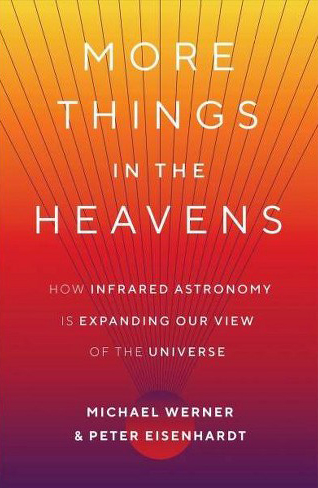Spitzer Space Telescope: Discovering “More Things in the Heavens” with NASA’s Spitzer Project Scientist Michael Werner
 Since 2003, in a unique Earth-trailing orbit around the Sun, the Spitzer Space Telescope has been observing in infrared an optically invisible universe dominated by dust and stars. Astronomers have been studying visible universe for thousands of years; however due to interstellar dust clouds and other obstructions to visible light, it was not possible to observe various regions of the universe. The Spitzer Space Telescope, the most sensitive infrared space observatory ever launched, has enabled us to study such optically obscure regions and processes in infrared. “The Spitzer Space Telescope has opened up a new window on the cosmos, yielding new perspectives and crucial insights into the genesis of planets, stars and galaxies”.
Since 2003, in a unique Earth-trailing orbit around the Sun, the Spitzer Space Telescope has been observing in infrared an optically invisible universe dominated by dust and stars. Astronomers have been studying visible universe for thousands of years; however due to interstellar dust clouds and other obstructions to visible light, it was not possible to observe various regions of the universe. The Spitzer Space Telescope, the most sensitive infrared space observatory ever launched, has enabled us to study such optically obscure regions and processes in infrared. “The Spitzer Space Telescope has opened up a new window on the cosmos, yielding new perspectives and crucial insights into the genesis of planets, stars and galaxies”.
Michael Werner and Peter Eisenhardt are among the scientists who worked for decades to bring this historic mission to life. Their book “More Things in the Heavens: How infrared astronomy is expanding our view of the universe” outlines an inside story of how Spitzer continues to carry out cutting-edge infrared astronomy to help answer fundamental questions that have intrigued humankind since ancient time: Where did we come from? How did the universe evolve? Are we alone? In this episode of Bridging the Gaps podcast, I speak with Michael Werner, one of the authors of this insightful book. Discussing various features of Spitzer’s mission and numerous topics covered in the book, this podcast presents a fascinating view of how infrared astronomy is aiding the search for exoplanets, enabling us to study exoplanet atmospheres, and is transforming our understanding of formation of stars and galaxies, and of the history and evolution of our universe.
Michael Werner is a senior research scientists at the NASA Jet Propulsion Laboratory, California Institute of Technology. He has been the lead scientist for the Spitzer Space Telescope since 1984.

Connect With Us